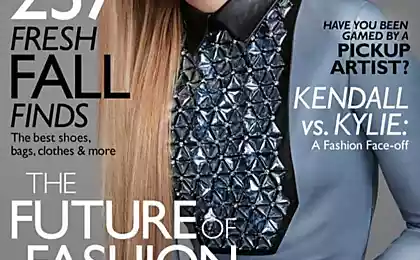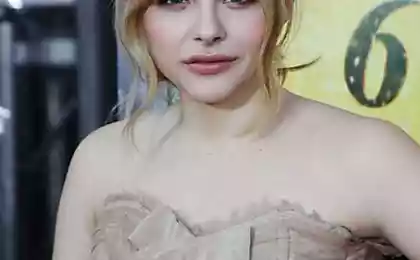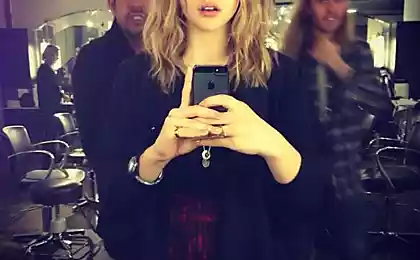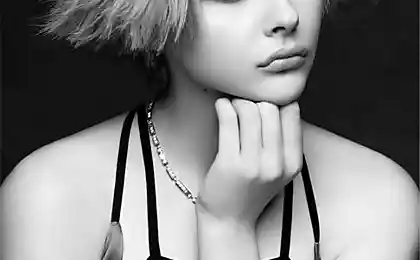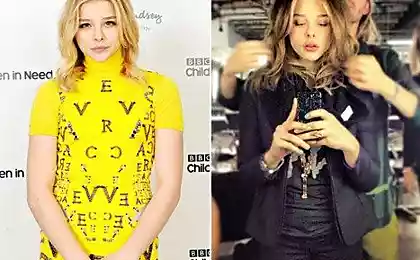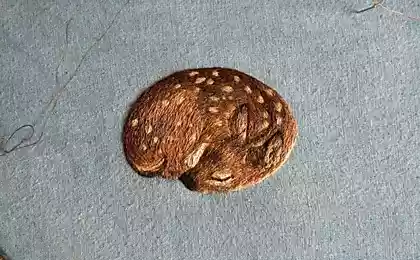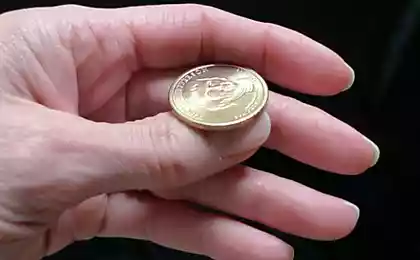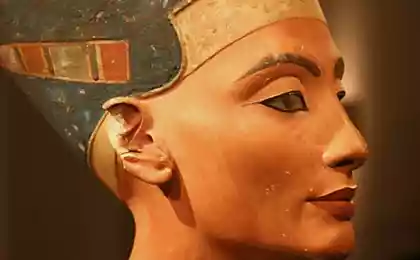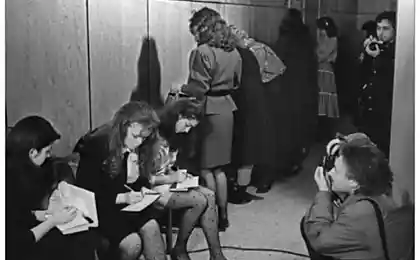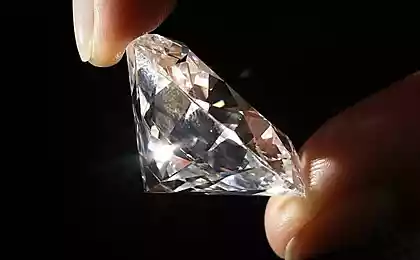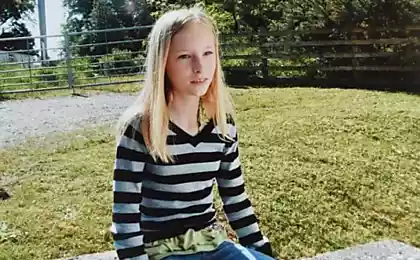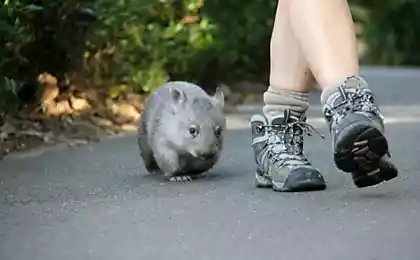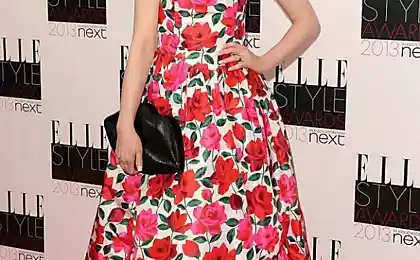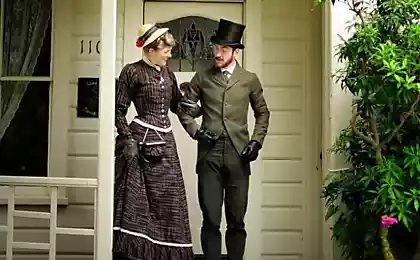1056
Beauty Chloe
Here is the little girl appeared in our zoo is not so long ago, she was the first from his mother and she, thinking that more is not morally ready, sent her daughter zoologists (by the way, the practice shows that the second and subsequent litters females educate themselves already). Called it a miracle Gorgeous Chloe. Next I will try to describe the process of artificial feeding Viverra in which I was able to take part.
Will have 14 photos and videos.
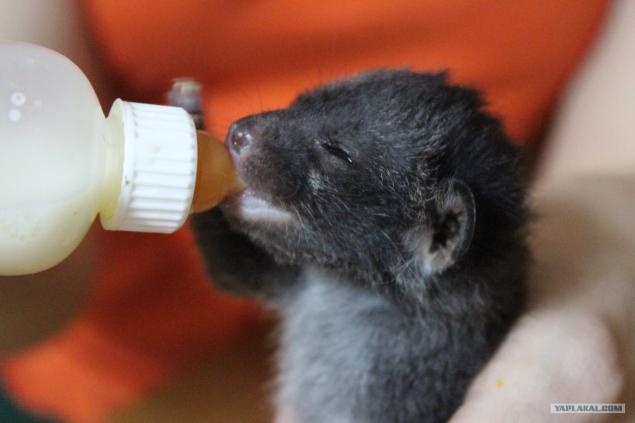
Exotic mammal civet family lives in Krasnoyarsk zoo. Viverra resemble both cats and martens: they have oblong pupils and retractable claws like cats, and the body shape is more like a marten, also have a musk gland. Live in Africa and Asia. At one time they were kept for catching mice, but the cat quickly replaced civet (I think, an important role was played by the presence of musk gland in Viverra).
In 2010, the Park "Swarms creek" for the first time appeared in Viverra offspring. Young female did not want to raise children and to "give" them into the hands of zoologists. Working in the sector of exotic animals, I was together with zoologists participated in the nutrition of their. We got tiny, smaller kittens, helpless squeaking lumps, blind and deaf. Had a lot of difficulties. Firstly, did not find any articles about artificial feeding these animals (think, not the first we were?). Milk was selected by trial and error - neither cat nor dog concentrated not come, eventually settled on a cow that we get here in the Park from the cow daughter.
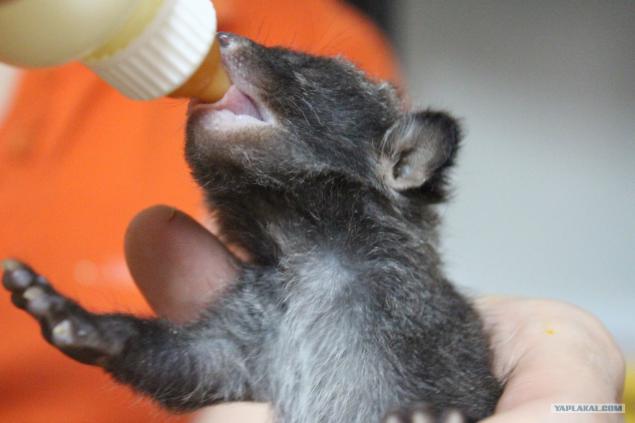
Second, feed such malyavok not so easy, they were wildly finicky. One eats nipples, the other from the pipette, by the way, they had four. Third, before feeding, the usual procedure - cloth trёsh popochki them to make D (defecation) and M (urination), in a notebook to write down all who D and who is M. An important point - the temperature tactile remember this most M - milk they drink only a temperature! During feeding standing next to a mug of boiling water, which constantly need to warm up a bottle of milk. And so every two hours, day and night (workers succeed each other). All the same, not to mix shifted out of the box in the header. Fortunately, to 3 weeks cubs have become more adequate, as some kittens grow.
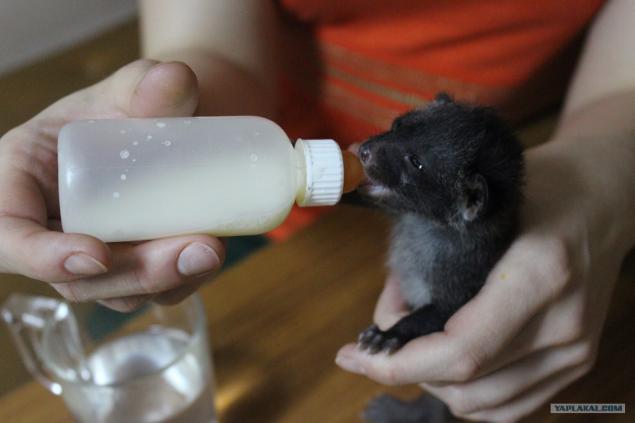
With this small samochki zoologists was easier already have experience. She lives in Brudere - type device incubator with temperature control and humidity for cubs.
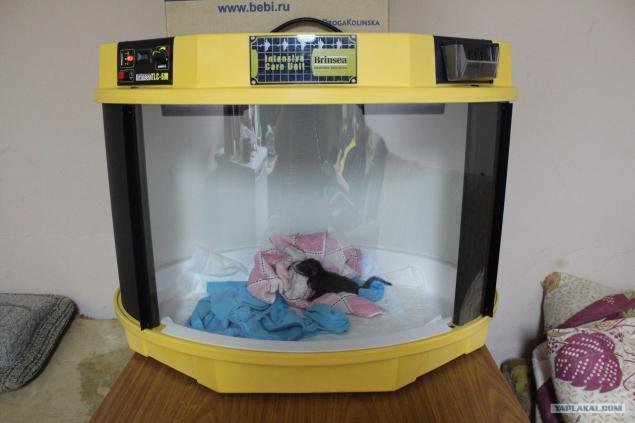
Opened eyes
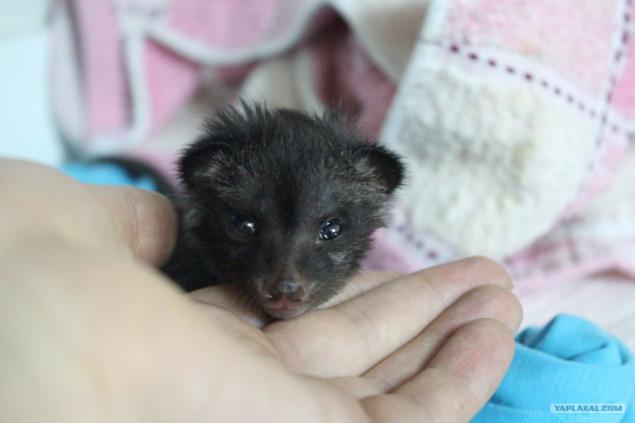
Give already rather eat!
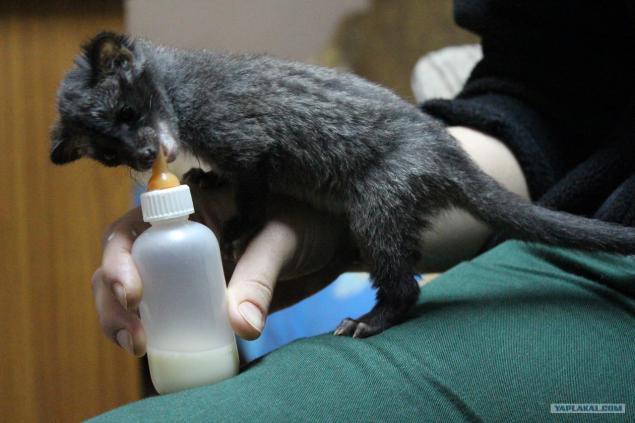
Chloe now has full-powered by an adult diet: the morning fruit plate with cottage cheese or quail eggs in the evening on weekdays fish, meat, live food (whole carcasses of rats, quail). On delicacy - tarakanchiki, marble or Madagascar.

...
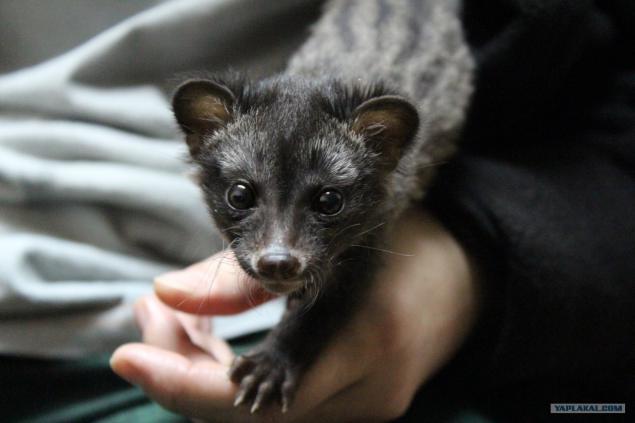
...
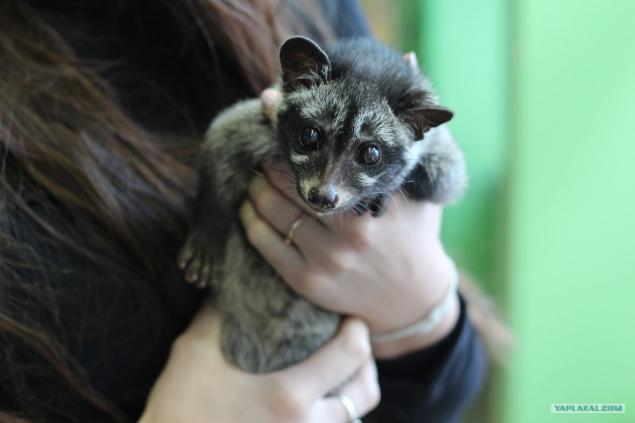
I still have Gerald Durrell in childhood Viverra read about what they zlobnenkie. And yes, no matter how much we do not like, with the onset of puberty begin to growl and more we handle them not to take, it happens with almost all the wild animals. Chloe soon become painful bite.
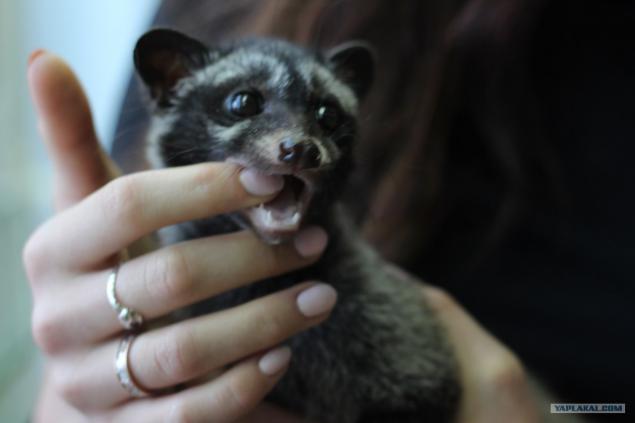
And yet - something maaalenkie teeth)
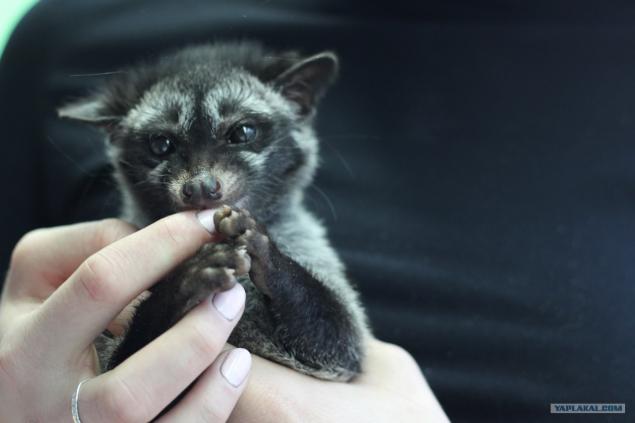
Dad - Norris.
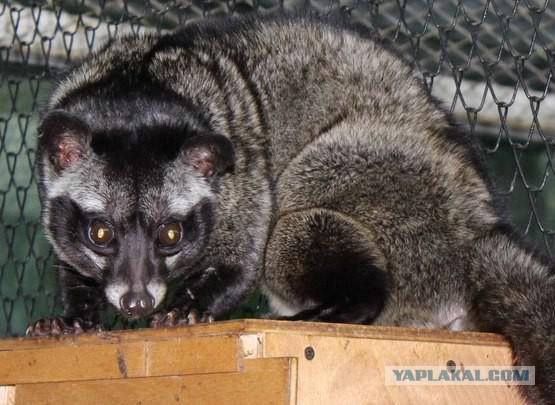
And yes, his brother's name is Chuck. It grew to Zdorovenki)
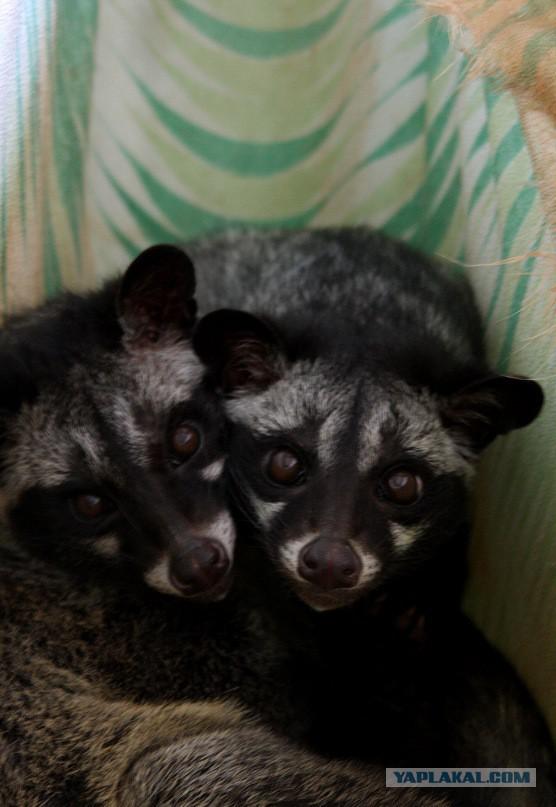
Holds a Norris in 2010, and after a newborn it easily fits in my palm!
PS My posts about animals in any case does not serve as an endorsement of "home" wild animals. Wild animals have no place at home, at the zoo cared for professionals.

Will have 14 photos and videos.

Exotic mammal civet family lives in Krasnoyarsk zoo. Viverra resemble both cats and martens: they have oblong pupils and retractable claws like cats, and the body shape is more like a marten, also have a musk gland. Live in Africa and Asia. At one time they were kept for catching mice, but the cat quickly replaced civet (I think, an important role was played by the presence of musk gland in Viverra).
In 2010, the Park "Swarms creek" for the first time appeared in Viverra offspring. Young female did not want to raise children and to "give" them into the hands of zoologists. Working in the sector of exotic animals, I was together with zoologists participated in the nutrition of their. We got tiny, smaller kittens, helpless squeaking lumps, blind and deaf. Had a lot of difficulties. Firstly, did not find any articles about artificial feeding these animals (think, not the first we were?). Milk was selected by trial and error - neither cat nor dog concentrated not come, eventually settled on a cow that we get here in the Park from the cow daughter.

Second, feed such malyavok not so easy, they were wildly finicky. One eats nipples, the other from the pipette, by the way, they had four. Third, before feeding, the usual procedure - cloth trёsh popochki them to make D (defecation) and M (urination), in a notebook to write down all who D and who is M. An important point - the temperature tactile remember this most M - milk they drink only a temperature! During feeding standing next to a mug of boiling water, which constantly need to warm up a bottle of milk. And so every two hours, day and night (workers succeed each other). All the same, not to mix shifted out of the box in the header. Fortunately, to 3 weeks cubs have become more adequate, as some kittens grow.

With this small samochki zoologists was easier already have experience. She lives in Brudere - type device incubator with temperature control and humidity for cubs.

Opened eyes

Give already rather eat!

Chloe now has full-powered by an adult diet: the morning fruit plate with cottage cheese or quail eggs in the evening on weekdays fish, meat, live food (whole carcasses of rats, quail). On delicacy - tarakanchiki, marble or Madagascar.

...

...

I still have Gerald Durrell in childhood Viverra read about what they zlobnenkie. And yes, no matter how much we do not like, with the onset of puberty begin to growl and more we handle them not to take, it happens with almost all the wild animals. Chloe soon become painful bite.

And yet - something maaalenkie teeth)

Dad - Norris.

And yes, his brother's name is Chuck. It grew to Zdorovenki)

Holds a Norris in 2010, and after a newborn it easily fits in my palm!
PS My posts about animals in any case does not serve as an endorsement of "home" wild animals. Wild animals have no place at home, at the zoo cared for professionals.

